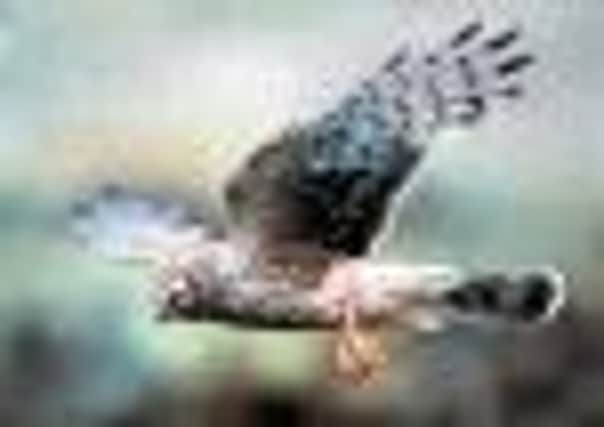Red-letter day if you manage to spot a harrier


Where have they all gone? Forty years ago I used to count on two in Kingley Vale October - March. Not any more.
There were birds all along the South Downs with an average total of 25 for the county. Today this has dropped to a dozen.
Advertisement
Hide AdAdvertisement
Hide AdConflict on Highland grouse moors may be part of the problem although wintering birds also come from Norway.
People often ask me how one can identify harriers from kites and buzzards. The short answer is refer to your bird book.
If book does not illustrate overhead outlines throw said book in the fire and buy one that does. I use the Collins Field Guide. It fits into your pocket.
First published in 1954 it has gone through many editions and is still the best.
Advertisement
Hide AdAdvertisement
Hide AdUsually these three big raptors are gliding high over your head and are probably in silhouette. You look at their tails first. Buzzards have short broad tails, red kites have long forked tails. Harriers have long narrow tails.
Then you go for the wings. Buzzards have broad wings and they are held straight. Kites have ragged narrow wings which are curved back a little. Harriers have very long narrow wings which are curved back a lot.
Then you go for behaviour. Buzzards usually soar in high circles. Kites try to soar but look a bit like a glider pilot on his first lesson, wobbling all over the sky. Harriers have even less clue and look like a Tiger Moth trying to find somewhere to land.
Harriers are masters of slow flight. They can’t actually hover like a kestrel but they can keep airborne at five miles an hour. Their heads hang down, for they are looking for small birds on the deck.
Advertisement
Hide AdAdvertisement
Hide AdThey have undercarriages lowered too as airbrake and bird catcher. The picture shows a female hen harrier in as dull plumage as a hen pheasant.
She will have a lovely big white ring above her tail giving her the name: ringtail, used by most twitchers. But the real prize is a male hen harrier with his splendid uniform of grey-blue and jet black wingtips.
Sussex has a resident total population of about 250 pairs of buzzards and about 70 individual red kites.
Any harriers in the county have just arrived. They will be in the Arun valley, Downs, Rye Bay, Lewes Brooks, possibly the harbours and the Commons in NW Sussex. A red-letter day if you do ever see one of these wildlings from the north.